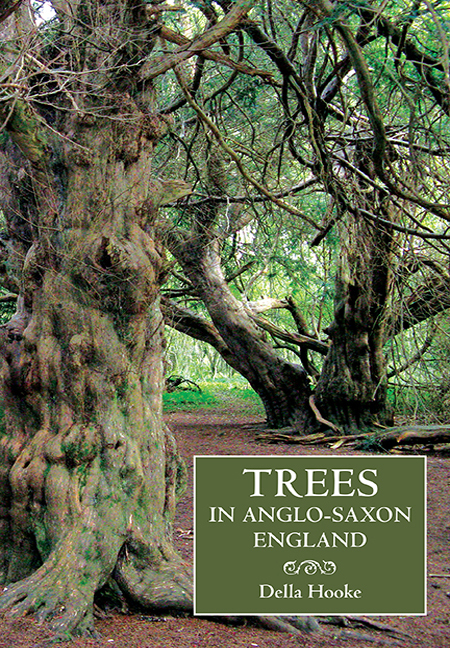Book contents
- Frontmatter
- Contents
- List of Illustrations and Tables
- Preface and Acknowledgements
- List of Abbreviations
- PART I Tree Symbolism
- Chapter 1 Trees and Groves in Pre-Christian Belief
- Chapter 2 Christianity and the Sacred Tree
- Chapter 3 Trees in Literature
- Chapter 4 Trees, Mythology and National Consciousness: into the Future
- PART II Trees and Woodland in the Anglo-Saxon Landscape
- PART III Individual Tree Species in Anglo-Saxon England
- Epilogue
- Bibliography
- Index
- Anglo-Saxon Studies
Chapter 3 - Trees in Literature
from PART I - Tree Symbolism
Published online by Cambridge University Press: 09 May 2017
- Frontmatter
- Contents
- List of Illustrations and Tables
- Preface and Acknowledgements
- List of Abbreviations
- PART I Tree Symbolism
- Chapter 1 Trees and Groves in Pre-Christian Belief
- Chapter 2 Christianity and the Sacred Tree
- Chapter 3 Trees in Literature
- Chapter 4 Trees, Mythology and National Consciousness: into the Future
- PART II Trees and Woodland in the Anglo-Saxon Landscape
- PART III Individual Tree Species in Anglo-Saxon England
- Epilogue
- Bibliography
- Index
- Anglo-Saxon Studies
Summary
Some literary sources referring to magical or religious belief were discussed in Chapter 1 and there are other forms of literature in Anglo-Saxon England which provide a bridge between the two, in particular runes, riddles and leechdoms. Runes were a form of writing used by Germanic peoples that involved incised letters, at first on wood, deliberately conceived as a series of easily made vertical or slanting strokes. The series of twenty-four letters is known as the futhark and can be archaeologically dated as far back as the second century AD, although it is likely to have its origin a century or so earlier. Scholars are divided over whether the runes stemmed from an adaptation of the Roman alphabet or began amongst the German tribes of Denmark. Certainly, runes could be used for magical scripts, but scholars such as Page and Bæksted argue that there is no evidence that this was their prime usage, despite the Eddic poems which note how Óðinn learned the wisdom of the runes during his nine-day ordeal hanging upon Yggdrasill. Elliott presents the evidence for the opposite view, arguing that the runes were essentially closely connected with ‘magical or ritualistic practices’; Page also notes how OE rūn ‘mystery, secrecy’ has been ‘held to connect the script with the occult, with magic’. Each rune had a name that was also a meaningful word, sometimes that of a tree. Some characters were lost in the Scandinavian futhark but in England others were added, among them the runes for ‘oak’ and ‘ash’, while þ, the thorn, may be an adaptation from a original *þorisaz, meaning ‘giant, monster’; a number of new runes were restricted to the north and north-west of Anglo-Saxon England. The ash and oak runes appear in Riddle 42: se torhta æsc . . . acas twegen ‘the bright Ash . . . two Oaks’, as letters spelling out, with others, HANA and HÆN for ‘cock and hen’. The Old English runes are interpreted in the Rune Poem, a West Saxon poem perhaps composed in the latter half of the tenth century.
The yew-tree and the birch-twig already appeared among the futhark:
(eoh) byþ utan unsmeþe treow,
heard hrusan fæst, hyrde fyres,
wyrtruman underwreþyd, wynan on eþle.
‘The yew is a tree with a rough bark,
hard and firm in the earth, a keeper of flame,
well-supported by its roots, a pleasure to have on one's land.’
- Type
- Chapter
- Information
- Trees in Anglo-Saxon EnglandLiterature, Lore and Landscape, pp. 58 - 95Publisher: Boydell & BrewerPrint publication year: 2011

